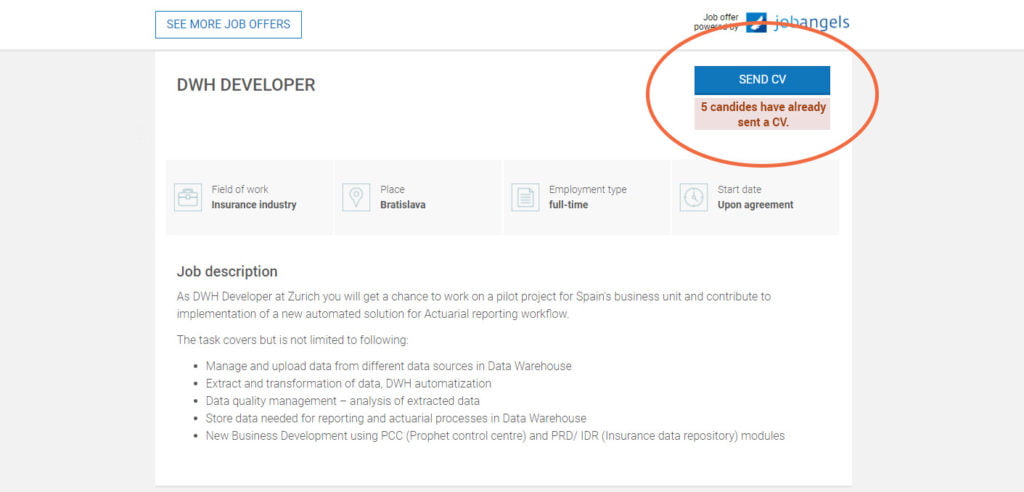8 Examples of Behavioral Economics Changing Consumer Behavior

Article content:
Behavioral economics is currently living through its golden age. Many companies and state departments want their own behavioral experts or even whole units of them. So, why the buzz?
Let’s go through some examples of how companies use behavioral economics to change the behavior of their customers in 4 main sectors: finance, marketing, HR, and customer service. But first thing first…
How can behavioral economics drive consumer behavior?
Consumer behavior is influenced by many factors, both internal, like customers’ personalities, and external, such as what others do or barriers that stand in their way.
To put it simply, behavioral economics takes these factors into account and adjusts the environment to nudge customers to purchase. If you want to know more about the basics, check out this great educational video by Crash Course:
Source: YouTube
Let’s be more specific. Here are 8 examples of behavioral economics being used to change consumer behavior across 4 sectors – finance, retail, human resources, and customer service.
Examples of behavioral economics in consumer behavior
Finance
Travel insurance take-up increased by 300%.
“Hey! Let’s take out some new insurance!” is something you’ve probably never said. If you have, let us know – we have lots of questions! Insurance simply isn’t something customers look forward to buying.
But what if the first year was free? Would that make a difference? That was the approach a certain insurance company used. Customers were offered insurance for the first year for free, following which they would be automatically billed the full price. But guess what? No one wanted it.
It was free – so how could it be that no one wanted it? The company couldn’t wrap their heads around this. So they decided to call Mindworx Behavioral Consulting for help. The first thing Mindworx did was carry out customer research to map any possible uncertainties the clients might have.
Uncertainty
Uncertainty is a situation when your customer has incomplete or missing information. A situation when their questions, concerns, and fears aren’t answered.
Why were uncertainties so important? From a behavioral economics point of view, uncertainty is a silent sales killer. The slightest doubt your customers might feel can cause them to postpone their decision to buy, or even worse, not to buy at all.
What Mindworx found was that customers were simply afraid that they’d forget to cancel the insurance after the free year. That would mean they would be paying for something they might not need at all. What was even worse, the company did not remind customers that the free year was coming to an end.
Mindworx proposed a very clear message in which they stated the company would remind customers about the end of the free year so they could cancel it in time. Along with other behavioral principles, this intervention increased online conversions by 300%.

Source: MINDWORX
Current account package take-up increased by 387%
A similarly boring activity to taking out new insurance is buying virtually any banking product. The truth is, customers want to spend as little time on this as possible.
This near non-existent customer involvement may cause issues down the road when the bank wants to sell clients more complex products. Customers just aren’t interested.
Behavioral economics teaches us that if we want customers to do something, it needs to be as easy as possible.
That was the case with a retail bank in Southeast Europe. They offered customers new packages which gave up to 40% savings on transactions. However, only 16% of customers were interested. The others stuck with their current account package.
Boxed Skills’ behavioral economics team was tasked with boosting signups to the newly-designed packages. And sure enough, after analyzing the decision-making process, they found a fatal flaw in its design. Buying a new package was simply too hard.
Behavioral economics teaches us that if we want customers to do something, it needs to be as easy as possible. But customers who wanted to seek out information about the new packages, needed to look at three different web pages or three separate documents at the branch.
Both in the branches and on the website, the bank also offered the current account package as the default option when signing up for an account. As comparing choices is generally a hard thing to do, people tend to stick with the default. And this case was no different.
Removing these obstacles was not the only thing the behavioral experts at Boxed Skills did, but it was certainly the most important one. As A/B testing showed, making a new package the default option and putting the information in one easy-to-find place led to an increase of 387% in package take-up.
Retail
Increasing the intention to buy by 128% by changing messaging and shelf display
An established skin-care company introduced a great new flagship product, a 3-step skincare regimen. It was essentially a package that consisted of 3 products: cleanser, toner and moisturizer, which were all designed to be used in tandem to achieve optimal results.
By now, you know what’s coming. Yes – it wasn’t exactly a bestseller, and the company was losing customers left and right. Until they called BEworks for help.
BEworks found multiple shortcomings, firstly with the messaging. Information about the 3-step regimen was hard to find and understand, even in the physical store.
Second, the products were segmented by product type, not skin type. Customers had trouble locating the right products when faced with shelf displays that featured too many options to choose from to compose their 3-step skincare regimen. In behavioral economics, this is called choice overload.
BEworks carried out extensive research and came up with multiple messages utilizing several behavioral principles. Among others, these included personalization, appeal to authority to increase people’s trust in the brand, and concretization to make the message easier to understand.
The team also hypothesized that a display which grouped objects in a more meaningful way (according to skin type) could increase the ease of finding the right products.
After conducting a laboratory experiment with over 5000 women, the results showed that female customers felt a greater sense of familiarity with the brand and also greater ease in selecting the right set of products for their needs with less hassle.
After conducting a laboratory experiment with over 5000 women, the results showed that female customers felt a greater sense of familiarity with the brand and also greater ease in selecting the right set of products for their needs with less hassle. Overall, intention to buy increased by 128%.
Changing product descriptions increased online conversion by 51%
Back in 2019, a top-end UK fashion brand faced low online sales. Customers arrived on the page, looked around, and left. Others put items in their shopping cart but abandoned them before completing payment.
The company spent a lot of money on market research and brand agencies, but it led to nothing. All they were left with was 16 segments of customers grouped according to their age, shopping history, spending habits, and location. But they had no idea what to do with this information.
They found customers used shopping to boost their confidence, fit in with their friends, or enhance their social group status.
A team of neuropsychologists from Innovationbubble suggested getting a deeper and more precise understanding of the customers’ needs. They used the NEOPIC Archetype engine – an online tool designed to identify the core needs of customers and get past conscious artificial responses.
By using this on 19,000 current, former and prospective customers, Innovationbubble managed to cut down the 16 original segments to just 3 groups based on their actual needs. They found customers used shopping to boost their confidence, fit in with their friends, or enhance their social group status.
Then they found a common theme – risk. All 3 groups were concerned about something. Based on this, Innovationbubble then crafted a universal message which included 3 separate risk-alienating lines in the same piece of copy and used it in the product description of every single item on the webpage.
A/B testing showed that the new descriptions increased conversions by 23% in the UK and by a whole 51% in the US market!
Human Resources
Changing a job ad attracted 3x more candidates
One of the world’s leading telecommunications companies was struggling to find the right people for their partnering call center. The job ad they put out contained the job description, education, skills requirements, and salary expectations. So why didn’t it work?
The ad needed to catch applicants' attention, emphasize the real benefits, address concerns, and last but not least, be relatable.
A team of experts in Mindworx looked into it and the first thing they did was try to understand the target audience. Who was the person that might respond to this ad?
They found that the job was perfect for people who don’t usually crave responsibility and don’t normally aim very high. The problem was that the current ad did not resonate with this group.
The ad needed to catch applicants’ attention, emphasize the real benefits, address concerns, and last but not least, be relatable.
Endowment Effect
When people own something they value it beyond its objective value. Frame your message in ways that make customers feel like they already own your product, discount or benefit.
The attention-getter was the headline. Mindworx used the endowment effect in the copy – the fact that once we own something, it’s hard for us to let it go.
And so, they gave the potential candidates an idea of what they could own with the headline Imagine your salary had no limits, followed by the job title. This was true, as there was a performance bonus which wasn’t limited by anything except the worker’s own skills.
To eliminate possible concerns among applicants, Mindworx took out the section on education, so as not to dissuade people without university degrees. They also replaced the requirements section with a story of what applicants would actually do.
An important aspect of rephrasing the ad was ditching the original ‘benefits’ as they were not that important for the given target audience and contained too much information. On the other hand, Mindworx highlighted other benefits such as stable working hours rather than shifts, which was a huge plus in this field.
When the copy was ready, there was one last thing to add: evidence. Mindworx used a behavioral principle called social proof. To put it simply, it says that we tend to behave in a way that others do. That’s why you look for reviews and testimonials every time you shop online.
The team included a testimonial from a current employee who had already walked the walk and was working in the advertised position at that time.

Source: MINDWORX
And the results? The incoming applications went from 7 to 21 in the first month. The new applicants were also more suitable for the role than before.

A job search portal used social proof to increase conversions by 154%
JobAngels is a job search portal that provides a platform where companies can place their job ads. Candidates can send their CV to the company directly through the portal. For every CV received, JobAngels receives a commission.
The task they gave to Mindworx was therefore fairly straightforward – to increase the number of CVs sent through the portal.
There was a catch though. Not a single thing could be changed in the job ads. Apart from that, they could suggest anything they wanted.
This finding prompted Mindworx to build a solution that would address the fear of not meeting all the requirements.
Research has shown that women tend to screen themselves out of the conversation and end up applying to 20% fewer jobs than men. In general, it’s enough for men to feel they fulfill only 60% of the requirements to apply for a job, whereas women feel they need to fulfill 100%.
This finding prompted Mindworx to build a solution that would address the fear of not meeting all the requirements. As people scrolled down to the candidate requirements and the website noticed the job seeker was about to leave the page, a pop-up window was triggered.
This pop-up encouraged people to submit their resumé, even though they didn’t meet all the requirements:

Source: Job Angels
In addition to that, Mindworx took a shot at a pretty bold move – social proof. Under the call-to-action button, they told job seekers how many people had already submitted their resumés.
Pretty counterintuitive, isn’t it? If job seekers saw that lots of people had already reacted, they would think that their chances of success were lower. Or would they?

Source: Job Angels
Not really. It turned out that showing people how many candidates had already applied just made the ad more attractive. If that many people were applying, it had to be a great job offer!
It turned out that the pop-up eliminating uncertainties combined with social proof increased the conversion rate by 154%!
Customer service
A single question helped Adobe Help Center increase retention by 8.8%
Customer retention is the worst nightmare of every customer service worker. If customers have already decided to leave, how can you stop them?
What if a simple tweak in a call script could make a customer calling up to cancel their subscription change their mind?
In 2016, Ogilvy Consulting was approached by Adobe’s inbound call center in Delhi. The goal was to retain more customers who were calling up to review their subscriptions.
First, Ogilvy’s experts decided to observe the call center agents directly at work. They noticed that the opening question that was consistently asked was: “Why are you calling to cancel?”

Discover ground-breaking ideas and fascinating solutions.
It makes sense, doesn’t it? It’s precious information that can help you to make sure you improve the product.
But what it also does is confirm the customers in their decision. So, once the customer starts to describe all the reasons to leave, it’s just the final nail in the coffin.
Ogilvy decided to turn it around and redirect customers’ attention in a whole other direction. Rather than asking “Why are you calling to cancel?”, they asked: “Why did you join Adobe in the first place?”
This simple shift in the conversation led to a reduction of 8.8% in dropouts!
Removing friction increased the number of customers handling their issues via self-service by 54%
Cisco Consumer Products is a company that offers different kinds of assistance for different customers. For instance, technology gurus are directed toward the online support community. Less technically advanced users are steered toward knowledge articles and provided with simple step-by-step instructions.
It takes more time to resolve an issue via email than a phone call.
Cisco’s goal was to make problem-solving as easy as possible for the customer. That’s why the most important of their findings was that it takes more time to resolve an issue via email than a phone call. On average around 2.4 emails were needed to resolve an issue, compared with 1.7 calls.
So, how could they make customers solve their problems via phone calls? In this case, the email option was friction – a barrier that stood in the way of desired behavior. Behavioral economics teaches that every barrier simply makes the behavior less likely.
So, what Cisco did was to remove the friction completely and only offer customers the phone option. This reliably reduced customer effort. At the beginning of the initiative toward more self-service in 2006, only 30% of customer contacts were handled through self-service. This figure rose to 84% in four years, and since then, the volume of calls has dropped as well.
These are just a few examples of how powerful a tool behavioral economics can be when it comes to consumer behavior. However, it can also be leveraged in hospitality, health and fitness, e-commerce, telco, and many other industries in creative and meaningful ways to nudge people in the right direction.
At this point, we can say for sure that the hype around it is well deserved.
Summary
What is Social Proof?
Social proof is the idea that people copy the actions of others in an attempt to emulate the “correct” behavior in certain situations. Essentially, it’s borrowing third-party influence wisdom from the crowd in order to sway potential customers.
How to Use Social Proof:
- Content matters. Social proof works best when people are uncertain (they’re more likely to look to others for cues and clues). To harness it, first identify the uncertainties that customers have and then nip them in the bud with the help of testimonials or other forms of social proof.
- Relevance matters. Not everyone’s actions are enough to sway other people. Social proof is most effective when the reference group is as relatable to your customers as possible.
- Placement matters. Use social proof as supporting copy near a CTA or at a friction point.
How to NOT Use Social Proof:
- General praise won’t help to convince prospective customers. Your testimonials need to counter actual uncertainties and NOT just praise your product or counter non-existent objections. Use testimonials that address uncertainties, that talk about the benefits of your product or service, and that use your business’s keywords.
- If you rely on percentages to make your argument stronger, DON’T just say what many people do, but rather what the MAJORITY does.
Be careful about negative social proof. If you want people to do something, don‘t tell them that the majority of people aren’t doing it.
















